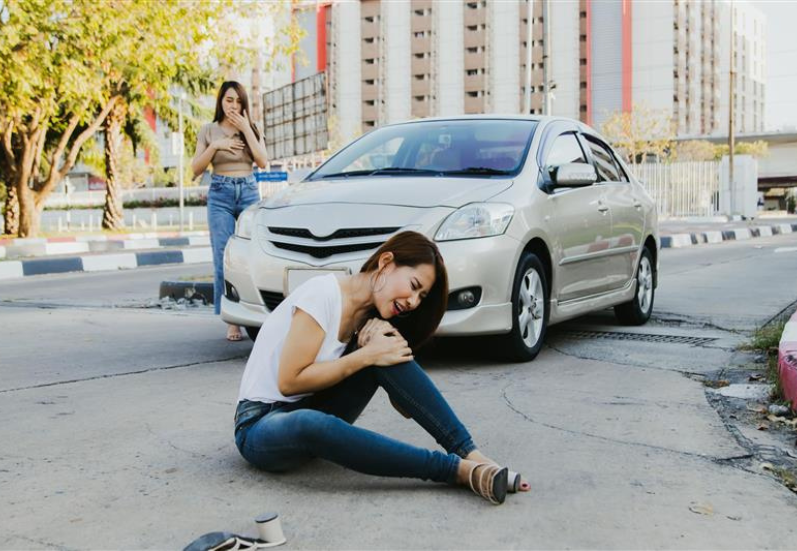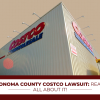
Charleston isn’t the easiest place to be a pedestrian. Drivers are often rushing, distracted, or unfamiliar with the city’s layout. And when a pedestrian does get hit in a place like Charleston, figuring out who’s at fault and proving it is not always simple.
Most people turn to a pedestrian accident lawyer in Charleston, WV, when an accident happens. And it makes sense that they do, because, of course, a local lawyer will know the ins and outs of the Charleston laws.
Hi. In today’s blog, I will be talking about how a pedestrian injury claim works and what some of the types of evidence that you might need in order to file one.
So, if that’s what you want to know, you have come to the right place. Therefore, keep on reading this blog till the end, and thank me later…
Are You Eligible To Make A Pedestrian Injury Claim?
Now, that is a great question! And generally, when you hire a lawyer to file your pedestrian injury claim, this is the first thing that they will check. Whether you are eligible for fling one or not!
Before initiating a pedestrian accident claim, your lawyer will check the following things about your case:
- A duty of care was owed to you by the defendant in respect of your case (almost always yes).
- They breached that duty by being negligent, and their negligence caused an accident.
- You were injured in your involvement as a pedestrian because of the accident.
Importantly, negligence can arise from a multitude of acts. For instance, some of the things that it might include are:
- Driving without care.
- Driving whilst under the influence.
- Reversing without looking back.
- Exceeding the speed limit.
Why Evidence Matters So Much In A Pedestrian Injury Claim?
When you’re hit by a car as a pedestrian, the truth is that your word alone won’t cut it, no matter how honest you are. You have to prove what happened, why it happened, how it hurt you, and how it’s still affecting your life.
Here are the specific kinds of evidence that actually help win a pedestrian accident:
Photos From the Scene
Images can be the safest and strongest kind of evidence. They can prove what happened without the need for explanations.
However, you can’t take a few pictures and leave them behind. You need images to include specific identifiers.
A wide shot of the scene can show whether there were traffic lights, stop signs, or assigned crossing signals. A wide shot can help prove if stopping was required for the driver.
Close-up images of the skid marks, or the crushed remnants of the car, can tell the story of speed and the direction of travel.
If you were struck hard enough to tear your clothes or scatter your belongings, then some images of those can aid your evidence for what and how hard you were struck.
And don’t skip the weather. Rain, snow, fog, and low lighting all affect driver visibility, and if that contributed to your accident, it needs to be documented.
Medical Records
You can’t win a claim without proving that you were actually hurt and that the injury came from the crash, not something else. Medical records do this job.
Right after an accident, you need to get checked out, even if the pain feels small. A delay in medical treatment makes insurance companies argue that your injuries weren’t serious, or that they weren’t even caused by the accident.
The records that matter include:
- Hospital admission records
- ER notes
- Doctor’s evaluations
- X-rays
- MRIs
- Test results
- Even prescriptions.
These all help show what your body went through and what care it needed. And keeping copies of your bills is important too—it proves how much the injury has cost you financially.
Police Reports: The Official Version of Events
A police report is a central piece of your case. This report is made by an officer trained to observe crash scenes and document what they see, right after it happens.
Their notes will include things like the position of the car, the placement of skid marks, injuries noticed on the spot, and sometimes even a diagram of the accident. It also includes whether the driver got a ticket or not.
The police might talk to witnesses too, and include their statements. That’s valuable because it’s all recorded while it’s still fresh. And it’s coming from someone neutral, not you, not the driver.
That makes it more believable in court. Make sure you get a copy. Don’t rely on anyone else to request it for you.
Witness Statements
One of the most underrated pieces of evidence is a good, clear witness statement. When someone else, who isn’t you or the driver, says what they saw, it adds serious weight to your side of the story.
If the witness noticed the driver speeding or texting, or if they saw you crossing legally while the car ignored a stop sign.
Even better if they overheard the driver admit something like “I didn’t see them.” That’s the kind of thing that sticks in a courtroom.
Your Clothes and Personal Items
Don’t throw away or wash your clothes after an accident. Torn, bloody, or dirty clothes can be real physical evidence if your case goes to trial.
The same goes for broken glasses, smashed phones, damaged backpacks, whatever you were carrying.
They show the impact. They’re physical proof of how violently the crash affected your body. Juries don’t just read reports, they see. And your lawyer can use these items to help them see the truth.
How Much Compensation Can You Get Out Of A Pedestrian Injury Claim?
If you win your claim, there is no specific compensation payout amount for a pedestrian accident, simply because of the enormity of variance.
A pedestrian hit by a car and suffering a dislocated knee would almost certainly receive far less compensation than a pedestrian knocked over on a motorcycle suffering an extreme brain injury.
Your personal injury lawyer will assess how much compensation you are eligible to receive from your pedestrian accident claim by splitting the claim into two parts:
- General damages: This part covers your compensation for your pain or suffering due to the injury you have suffered.
- Special damages: This part covers you for any costs, losses or expenses arising from your pedestrian accident. You could claim the cost of any damaged clothing in the accident, any lost income, and medical expenses to name just a few.
In other words, there is no fixed compensation amount that one can ensure when it comes to pedestrian injury claims. It all depends on the severity of your accident and the degree of negligence when it comes to the at-fault party!
Read Also:
- What Sets a Great Criminal Lawyer Apart in High-Stakes Cases
- Surprising Factors Influencing the Outcome of Personal Injury Cases
- The Ultimate Personal Injury Dos and Don’ts Guide: What You Need to Know











0 Reply
No comments yet.